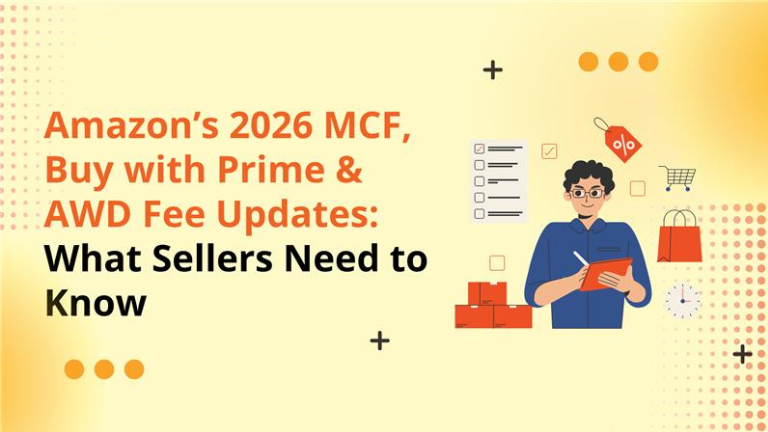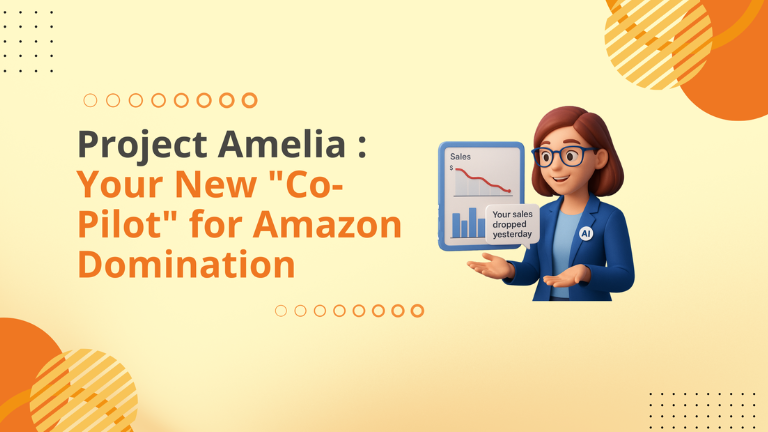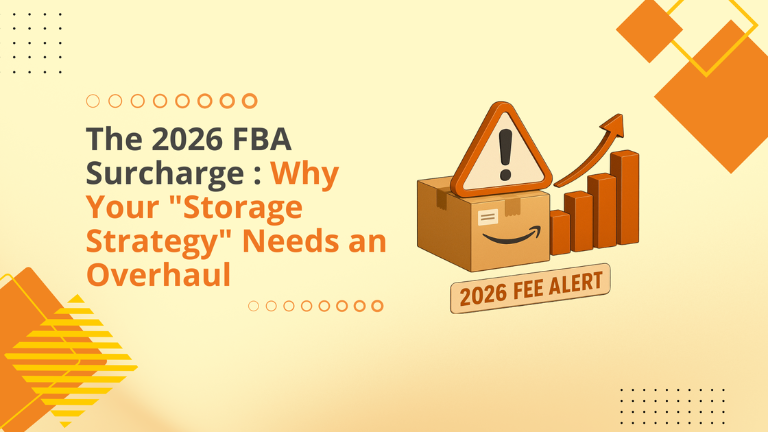On January 15 2026, Amazon will roll out fee updates affecting Multi-Channel Fulfillment (MCF), Buy with Prime, and Amazon Warehousing & Distribution (AWD).
While the per-unit increases may look small, their combined effect can meaningfully reduce profit margins for FBA and omnichannel brands. Understanding the new rates and re-modeling profitability at the SKU level is critical to staying ahead.
Contents
Breaking Down the 2026 Fee Changes
Multi-Channel Fulfillment (MCF)
Amazon MCF fees will increase by about $0.30 per unit on average, mainly impacting 1–2 unit orders. Preferred Pricing remains available to offset some cost for high-volume brands.
Buy with Prime
Average fulfillment fees rise around $0.24 per unit, bringing them closer to standard FBA rates. Amazon has not confirmed any change to the Prime service fee minimum.
Amazon Warehousing & Distribution (AWD)
- West Region Storage: $0.57 per cu ft per month (≈ 19% increase).
- Transportation: $1.40 per cu ft base rate (≈ 22% increase).
- Box Processing: + $0.05 per box.
- Discount Programs: 10% Smart Storage and 20% Managed Storage discounts continue for participating sellers.
Seeing the Real Impact with Profit Analytics
Amazon’s expanded Profit Analytics dashboard lets sellers review SKU-level margins with future fee tables built in. You can compare 2025 vs 2026 costs, integrate your own COGS and freight inputs, and forecast profitability per product.
Use it to identify which SKUs face the biggest fee impact and adjust inventory, pricing, or advertising accordingly before Q1 2026.
Seller Action Plan Before January 2026
1. Audit Profitability: Run Profit Analytics to simulate 2026 margins.
2. Rebalance AWD Inventory: Shift stock from high-cost regions where possible.
3. Leverage Discount Programs: Enroll in Smart or Managed Storage for fee reductions.
4. Review Pricing and Ad Spend: Ensure net contribution margin stays positive post-fee.
5. Monitor SKU Performance: Identify products that may require bundle or cost structure adjustments.
These 2026 fee changes reflect Amazon’s continued shift toward regionalized logistics and cost alignment across programs. The brands that will thrive are those that plan ahead — using Profit Analytics to forecast impact, realigning inventory, and keeping their cash flow healthy before the January deadline.
Want to see your SKU-by-SKU 2026 impact and build a plan to stay profitable?
Schedule a strategy call with Big Internet Ecommerce today!
Follow Big Internet Ecommerce (BIE) on Instagram & LinkedIn to stay updated with the latest trends in Amazon selling.






